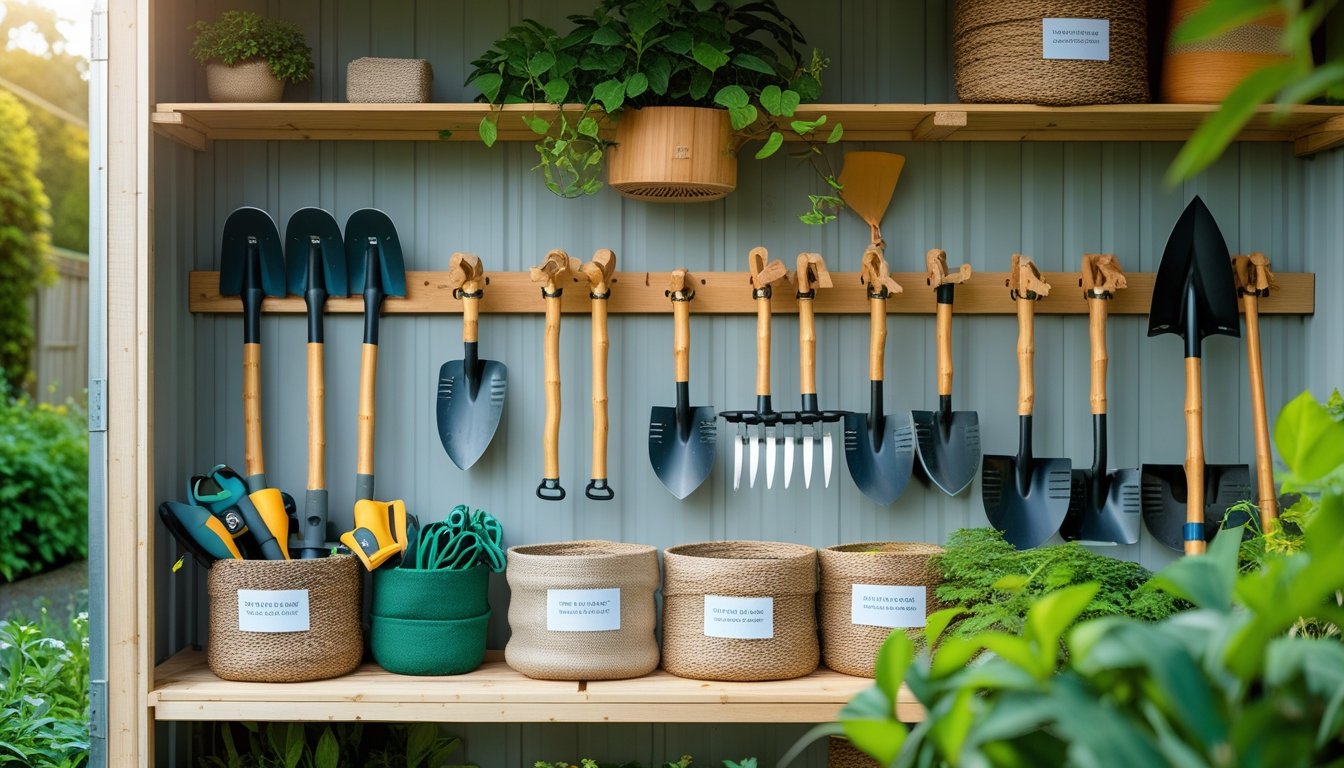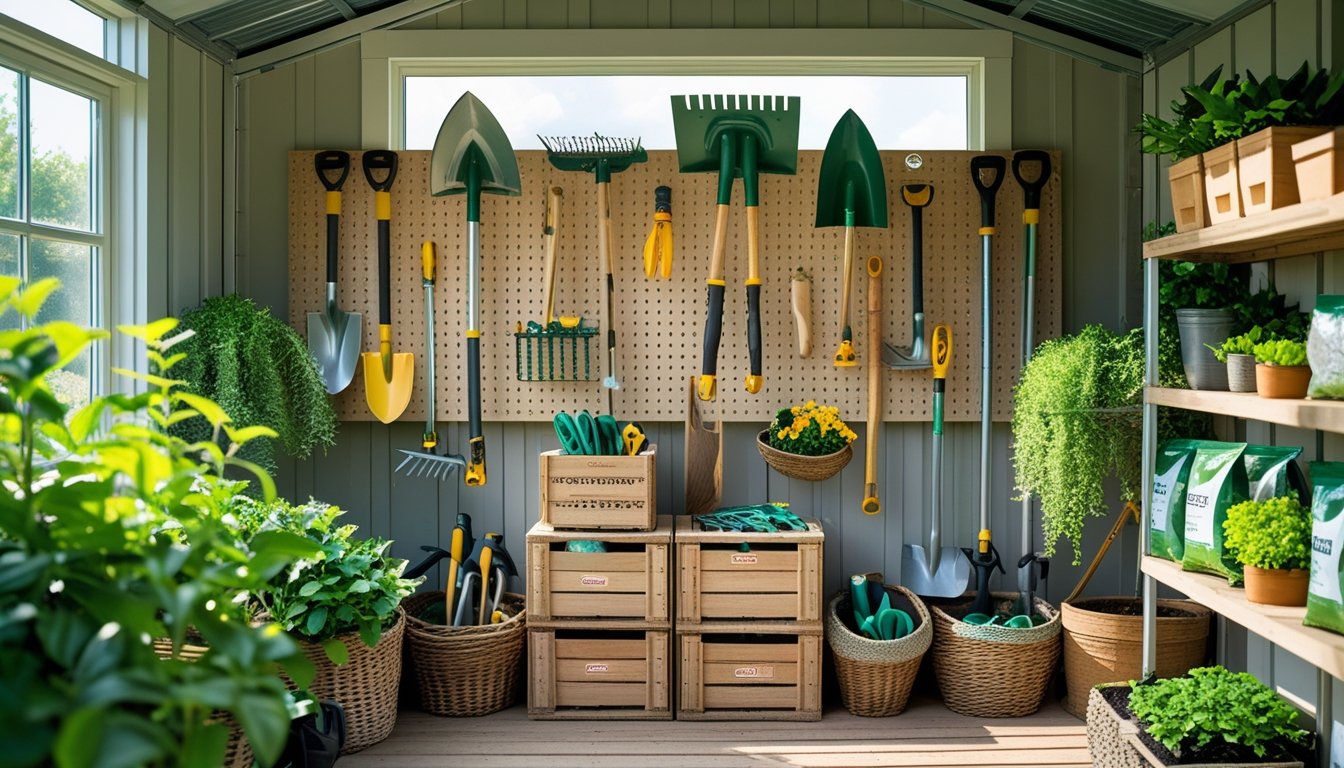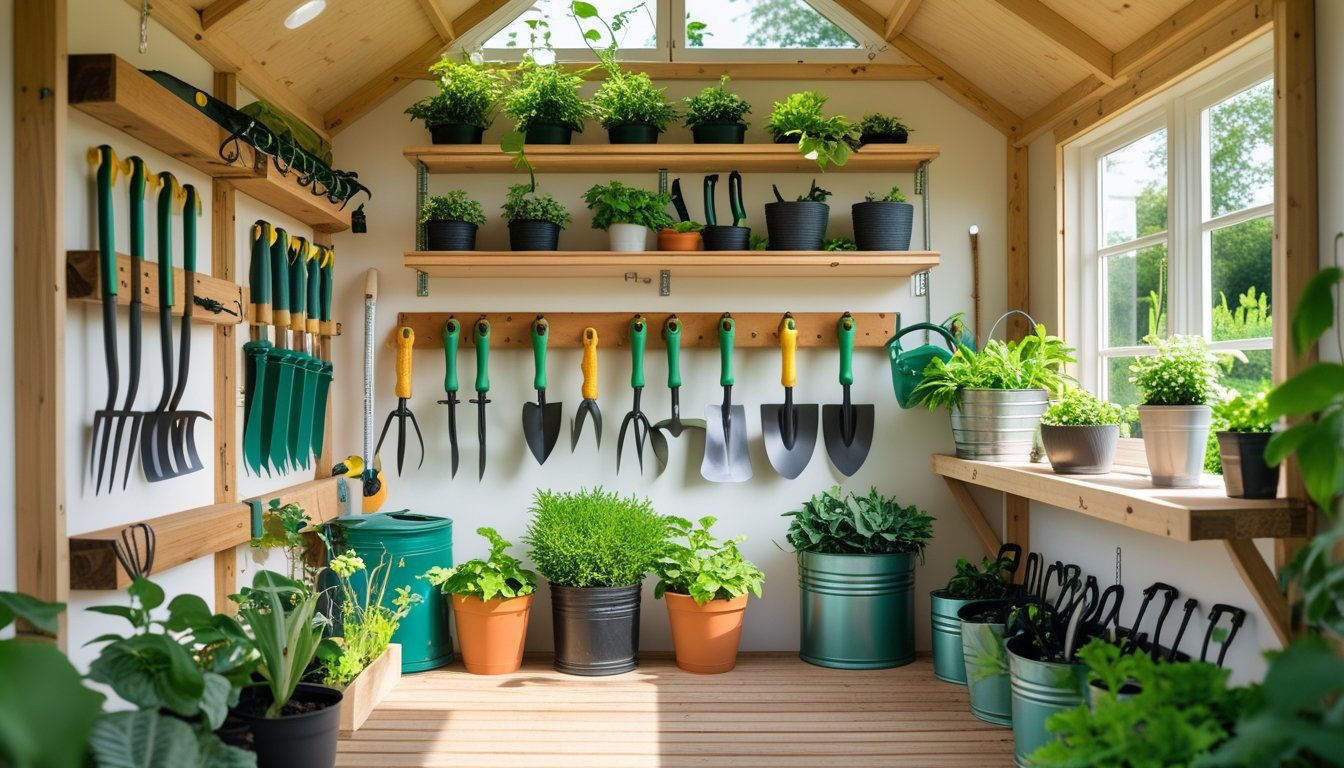Late updated: 13 Jun 2025 12:06
Written by: Sarah Hollister
Sustainable Ways To Organise Garden Tools: Efficient Eco-Friendly Strategies
In today's fast-paced world, maintaining a garden can become a challenge, especially when it comes to keeping tools organised. Not only does organisation save time, but it also enhances efficiency when planting and maintaining your outdoor spaces. Embracing sustainable ways to organise your garden tools is a great step towards reducing waste and promoting an eco-friendly lifestyle.

Reusing materials you already have can be both cost-effective and environmentally friendly. For instance, repurposing mason jars to store smaller tools or hardware not only keeps everything visible but also adds a rustic charm to your shelving. If you're searching for more spacious storage, wooden wall racks made from scrap plywood or reclaimed lumber offer a sustainable solution that combines functionality with aesthetics.
The potential for creative organisation is endless, whether it's through upcycling household items or investing in sustainable storage solutions. These methods not only keep your garden tools easily accessible but also align with a conscious effort to reduce consumption and waste. ### Key Takeaways
- Sustainable tool organisation promotes eco-friendliness and reduces waste.
- Repurposing and upcycling materials can be both functional and aesthetic.
- Creative storage solutions enhance garden tool accessibility.
Essential Approaches to Organising Garden Tools

Efficient garden tool organisation saves time and extends the lifespan of your equipment. By incorporating wall-mounted holders, cabinets, and proper storage techniques, we can maintain a clutter-free and productive garden space.
Utilising Wall-Mounted Tool Holders
Wall-mounted tool holders are ideal for keeping garden tools accessible and tidy. These holders can be installed easily in sheds or garages, using materials such as metal racks or hooks.
By securing tools vertically, we maximise floor space, making it easier to move around. This approach works well for long-handled tools like spades, brooms, and rakes. Additionally, labelling each placement spot makes it straightforward to return tools to their designated locations, reducing the chances of misplacement.
Implementing Cabinets and Shelving Units
Cabinets and shelving units offer organised storage solutions for various garden tools. With drawers, shelves, and compartments, these units can accommodate everything from small hand tools to larger power equipment.
Selecting moisture-resistant materials is essential to prevent rust and decay. Shelving units can be customised with bins or containers for segregating items. Clear labelling of each compartment simplifies retrieval and encourages consistent tidiness. These solutions help eliminate clutter and maintain an orderly storage environment, allowing us to find what we need swiftly.
Proper Storage of Hand Tools and Rakes
Hand tools and rakes require specific storage strategies to ensure longevity and efficiency. For hand tools, small bins or drawer organisers work best. Preventing rust is crucial, so keeping these tools dry is a priority.
Rakes, due to their unique shape, are best hung on garage or shed walls using hooks or specialised holders. By maintaining a dedicated space for each tool, we reduce wear and tear caused by stacking or improper storage. Regular cleaning and maintenance further prolong the life of our garden equipment, ensuring they remain in excellent condition for future projects.
Sustainable Solutions for Garden Storage

Sustainable garden storage combines eco-friendly methods with practical organisation. By reusing existing materials and creating dedicated spaces for essentials like potting soil, fertiliser, and seeds, we can effectively manage our tools and resources while minimising environmental impact.
Reusing Materials for Custom Storage
Reusing materials is an effective way to create custom storage solutions for our garden. Old furniture can be repurposed into outdoor storage units, providing a new lease of life to items otherwise destined for landfill.
Glass jars, particularly mason jars, offer a transparent and moisture-proof solution for storing small items like nails or screws. By attaching the jar lids to the underside of a shelf, we create an easily accessible system. Using recycled crates to construct shelves or tool racks also provides a sturdy organisational structure. This not only reduces waste but also adds a touch of personal style to our garden space.
Integrating Potting Soil, Fertiliser, and Seeds Storage Sustainably
Effective storage of potting soil, fertiliser, and seeds is crucial for maintaining their quality. Using containers made from natural materials like bamboo or wicker keeps them protected while aligning with sustainable practices.
Airtight metal bins are ideal for potting soil and fertiliser. They shield contents from moisture and pests, keeping them in prime condition. For seeds, repurposing glass jars or metal tins helps in preserving their viability. Labelling these containers with their contents ensures easy identification and proper usage rotation, preventing waste and ensuring our gardening supplies are ready when needed.
These methods integrate sustainable principles with garden practicality, promoting resource efficiency and environmental care.
Frequently Asked Questions

Our focus is on providing practical solutions for sustainable garden tool organisation. We delve into methods for maintaining tools, optimising storage in small spaces, and selecting durable materials. We also explore innovative storage solutions that don’t require a shed and share best practices for tool care, with an emphasis on eco-friendly methods.
How can one ensure garden tools remain in good condition through effective storage?
Regular maintenance and storage in dry areas are key. Clean your tools before storing to prevent rust and corrosion. Ensure they are dry, as moisture can cause damage over time. A simple habit of wiping down tools after use can extend their lifespan significantly.
What are the optimal solutions for organising garden tools in limited spaces?
Utilise vertical space by installing pegboards or wall-mounted racks. These solutions enable you to keep tools organised without using much floor space. Consider hanging tools like shovels and rakes on the wall. Compact storage containers or boxes can also help keep smaller items in order.
Which materials are recommended for long-term storage of outdoor tools?
Use weather-resistant materials like stainless steel for racks and storage units. Wood is also an option if treated against moisture. Plastic containers should be UV-resistant to avoid degradation. The important thing is to choose materials that withstand varying weather conditions and help protect tools effectively.
How does one create a garden tool storage system without the use of a shed?
Install outdoor hooks or wall-mounted cabinets. These can be attached to fences or garage walls. Consider tool racks that withstand weather exposure. Utilise overhangs or canopies to shield tools from rain. Get creative with upcycling, using old containers or crates as makeshift storage units.
What are the best practices for care and maintenance of gardening equipment?
Regular cleaning and sharpening of blades are essential. Lubricate moving parts to minimise wear and tear. Store tools properly to avoid unintended damage. Frequent maintenance checks help spot early signs of deterioration. By adhering to these practices, we can ensure our tools last longer and perform efficiently.
Could you suggest environment-friendly garden tool organisation methods?
Repurpose old furniture or materials for storage. Use recycled containers like mason jars for smaller items. Install shelving made from reclaimed wood. These methods not only provide effective storage solutions but also minimise environmental impact by reducing waste and utilising existing resources.
